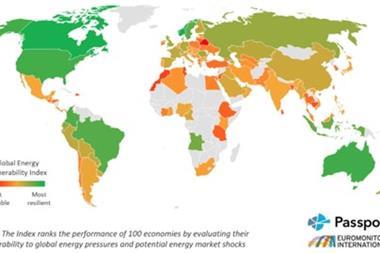In October 2005, after much delay and consultation, the General Product Safety Regulations 2005 finally came into force in the UK. They had been touted round lawyers and industry, as the Department of Trade & Industry sought to give effect to a European Directive aimed at ensuring British consumers got better and safer products.
Most manufacturers will be aware of the content of the regulations, which create a new statutory regime for product safety in terms of both management of issues and enforcement. The key theme of the regulations is self-enforcement by manufacturers, backed by serious criminal penalties for those found to have failed to have acted appropriately.
The regulations are designed to get product manufacturers to be pro-active and transparent when a product safety issue arises. But the temptation for some manufacturers to sweep a potential problem under the carpet will remain strong.
The regulations give powers to trading standards departments to take a range of actions, from providing advice at one end of the scale, to requiring product recall and withdrawal of the product from the market at the other.
The regulations stand in addition to issues of civil product liability and nothing displaces the provisions of, for example, the Consumer Protection Act 1987.
What effect might these regulations have on the boardroom? Are we entering an era where business is liberated by these new provisions to market products with greater confidence and enthusiasm? Or, as many have suggested, are we about to see the heavy hand of regulation dampen innovation and enterprise?
The answer, as is so often the case, is probably a bit of both.
Review and re-evaluation
The first question most companies will ask themselves is how the regulations affect their present product range. The short answer to that is that, if you do not have a dangerous product, you do not have anything to worry about. But, behind that somewhat disingenuous sound-bite lies a range of issues.
Most companies will at least want to review their existing product lines.
Most companies operate their production facilities with a degree of sophistication and control in the area of quality, so that dangerous products will be the unpredictable exception rather than the unwelcome rule. But it is also true that you can never review risk too often. Companies may feel it is an appropriate time to review what they know about their own production systems and values.
For some companies, such as those in the pharmaceutical industry, different regulations already require a rigorous and systematic appraisal of unexpected or adverse events resulting from the use of products. Even outside such sectors, companies need to ensure that the lessons from customer service departments are properly reported, analysed and implemented into existing product lines. Is a customer comment a complaint, a congratulation or a key to unlocking a potential defect?
Of course, all this has a cost, and the mantra of 'if it ain't broke, don't fix it' will certainly tempt some companies away from addressing the regulations in this way. Such review may not be a luxury, however.
Given the obligation on companies to report dangerous products to the enforcement authorities, time spent on reviewing might prevent criticism and enforcement action down the line.
Research and development
The main impact of the regulations, however, is likely to be less on current products than on future developments. There is always a tension between the commercial objectives of a new product and the technology behind it. That tension may become more sharply drawn as safety becomes a central plank of product development strategy.
Again, most companies already place product safety at the core of their R&D effort - at least at the stage where an idea is transformed into a saleable item. This process has always been driven, especially in foods, consumer goods and medical markets, by the need to protect corporate reputation, and nothing will change in that regard.
Companies need to think, however, about redoubling their efforts in this respect. Corporate reputation will become an even more fragile asset in an environment where transparency of reporting problematic products is obligatory. Directors and officers know they have no discretion in the matter. Risk managers and counsel must ensure the business leaders know their reputation. Any failure to comply will have disastrous consequences on both an individual and corporate level.
With the risk of directors going to jail for breach of the regulations, companies face a triple whammy of bad news if things go wrong. First, there is the risk of criminal charges and penalties to individuals at a senior level. Secondly, there is the operational commercial risk of public branding of your products as dangerous and, thirdly, of long-term damage to the reputation and standing of the business.
The regulations are an issue that companies have to address at the strategic level. Some senior executives have been heard to say that the regulations are stifling; that they strangle innovation. That view, while understandable, may partially at least miss the point. The regulations are undoubtedly a further pressure on business. The statutory regime they represent can validly be seen as more onerous than the regime left behind. In terms of civil liability, however, they add nothing to the previous law on the subject, and executives need to be clear about the risks to their business and processes which the regulations actually represent.
Companies need to be intimately aware of the provisions of the regulations but, rather than view them as a tourniquet, there is something to be said for the view that the regulations can, in some strange way, act as a facilitator for business. In other words, by understanding the regulations and building systems internally to minimise the risk of falling foul of their provisions, companies might be able to bring a product to market with more confidence that they have engineered out anything which could lead to something which is dangerous within the meaning of the regulations.
In truth, the real position falls somewhere in between. Companies will undoubtedly have to think extremely carefully before committing to market a product which has any predictable or identifiable form of risk associated with it. Issues of reputation and shareholder value demand that rigorous sort of conceptual audit. But, equally, the regulations by themselves should not demand that any project is cancelled on risk grounds. The regulations may make the questions more pressing; they do not raise the questions for the first time.
Assessing the risk
Companies will - or should - have their own risk management policies and structures, and the regulations ought properly to be considered in the light of them. Risk managers might find it valuable to consider the analogy raised in some Consumer Protection Act civil liability cases, where judges have looked at liabilities associated with 'standard' and 'non-standard' products.
That means there are two main categories of dangerous products - those which are dangerous because of a flaw in their design or concept (standard) and those which reach the market place other than as the producer intended (non-standard). Risk management policies need to take account of making sure everything is done to design out potential problems and to ensure that production controls and standards are designed to ensure no flaw creeps in between the design board and the factory gate.
The heavy hand
Fears have been expressed that the robust nature of the obligations will be enforced by equally robust implementation by trading standards departments.
Time will tell, and, of course, trading standards officers have duties and obligations to meet. They will, undoubtedly, seek to discharge those duties to the best of their abilities and resources. But fears of over-zealous enforcement again seem to misunderstand the conceptual basis of the regulations.
Trading standards departments have wide-ranging powers, but the concept of the regulations appears to be that these will be used as a weapon, if not of last resort, of at least second or third line tactics. The enforcement authorities appear to expect the self-reporting and self-enforcement provisions of the regulations to mean that companies are pro-active and transparent about issues relating to the regulations. If that is to be successful, there will need to be a degree of pragmatism and cooperation if companies are to recognise that openness is the best policy.
There is an appeals process in relation to certain of the steps which trading standards officers can take, and it seems logical to assume that such powers will only be exercised in situations where appeals are unlikely or where they are likely not to succeed.
Taking them seriously
The regulations must be taken seriously by companies. How seriously will be a question for each business to answer in its own context.
Non-compliance is likely to cause many more difficulties than it appears to solve at first. The regulations are not a bar to innovation and enterprise, but companies must keep under review the riskiness of their R&D programmes to ensure that a viable and safe product is possible at the end of the day.
Of course, as with all new regulation, time will tell how robust an approach the authorities will take. But for companies who adopt a safe product strategy from beginning to end there may well be commercial gain to be had from the assurance of safety that customers will get from the integrity of that process.
- Campbell Dye is a partner in the products liability and risk group at national commercial law firm, Beachcroft Wansbroughs, Tel: 020 7208 6800, E-mail: cdye@bwlaw.co.uk
GENERAL PRODUCT SAFETY (GPS) REGULATIONS 2005
The General Product Safety (GPS) Regulations 2005 which implement Directive 2001/95/EC, came into force in the UK on 1 October 2005. On the same date the General Product Safety Regulations 1994 and s10 of the Consumer Protection Act 1987 were repealed, as they served no further purpose.
In principle, the 2005 Regulations apply to all products (new and second-hand) used by consumers, whether intended for them or not. The caveat to this is that product-specific legislation will continue to take precedence in areas where this has provisions with similar objectives to those of the GPS regulations. There are also some exceptions to the cover for second-hand products.
The 2005 regulations maintain the general duty placed on producers and distributors to place on the market (or supply) only products that are safe in normal or reasonable foreseeable use. The principal responsibility for day-to-day enforcement of the regulations lies with local authorities.



















